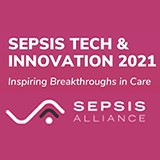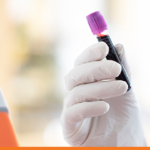Impact clinical decisions and outcomes with T2 Biosystems Panels
Products are for professional/laboratory use
Bloodstream infections (BSI) are a major cause of global morbidity and mortality and are increasing in incidence1,2. When left untreated, BSIs can lead to sepsis, an inflammatory response to infection that can result in organ system failure and death.
Sepsis contributes to >35% of inpatient deaths and is the most expensive US hospital-treated conditions, representing a total cost of sepsis care for inpatient and SNF admissions conservatively estimated at more than $62 billion as of 20193,4.
In 2015, the Centers for Medicare and Medicaid Services (CMS) instituted a sepsis performance measure bundle (SEP-1) to promote better care for sepsis patients5. A recent study evaluating changes and outcomes that arose from SEP-1 implementation showed that appropriate antibiotic treatment was only started in half of the cases and concluded that there were no improvements in clinical outcomes when initiating the Sep-1 bundle and that revising the measure may optimize its future effect6.
The current methods for detecting and treating sepsis are hindered by lack of sensitivity and extended waiting periods for blood culture positivity. When every hour delay in time to appropriate therapy decreases survival rates by 7.6%, it is imperative that patients receive targeted therapy as soon as possible7. The T2Bacteria® Panel provides species-specific results, directly from whole blood within 3 to 5 hours of first blood draw, often before the second dose of empiric antibiotics are given. This enables clinicians to target therapy for patients suspected of sepsis, when every hour counts.
To read a summary of clinical literature evaluating the performance and clinical outcomes of the T2Bacteria Panel for the diagnosis of bloodstream infections, download our latest white paper below.
Kits available for Research Use Only in Australia
Recent and upcoming T2 Biosystems Scientific Presentations
 |
“Culture Independent Rapid Diagnostics Impact on Sepsis Management“ June 20, 2021, 12:30 PM – 1:30 PM (on-demand) Speakers: Dr. James Snyder, Dr. Todd McCarty, Dr. Aparna Ahuja |
 |
“Breaking New Ground in Sepsis Diagnosis and Management with Non-Culture-Based Tests“ June 23, 2021, 2:45-3:15 ET Speakers: Dr. Debra Goff, Dr. Aparna Ahuja |
 |
“The crucial role of rapid diagnostics in the early detection of secondary bacterial and fungal infections complicating COVID-19“ July 12, 2021, 9:30-10:30 CET Speakers: Dr. Thomas Walsh, Dr. Tamara Seitz, Dr. Aparna Ahuja |
References
1.Buehler SS, Madison B, Snyder SR, et al. Effectiveness of Practices To Increase Timeliness of Providing Targeted Therapy for Inpatients with Bloodstream Infections: a Laboratory Medicine Best Practices Systematic Review and Meta-analysis. Clin Microbiol Rev. 2016;29(1):59-103.
2. Bearman GM, Wenzel RP. Bacteremias: a leading cause of death. Arch Med Res. 2005;36(6):646-659.
3. Liu V, Escobar GJ, Greene JD, et al. Hospital deaths in patients with sepsis from 2 independent cohorts. JAMA. 2014;312(1):90-92.
4. Buchman, Timothy G., et al. “Sepsis among medicare beneficiaries: 1. The burdens of sepsis, 2012–2018.” Critical care medicine 48.3 (2020): 276.
5. https://cmit.cms.gov/CMIT_public/ViewMeasure?MeasureId=1017
6. Barbash, Ian J., et al. “Treatment patterns and clinical outcomes after the introduction of the Medicare Sepsis Performance Measure (SEP-1).” Annals of Internal Medicine (2021).
7. Kumar A, Roberts D, Wood KE, et al. Duration of hypotension before initiation of effective antimicrobial therapy is the critical determinant of survival in human septic shock. Crit Care Med. 2006;34(6):1589-1596.
Kits available for Research Use Only








